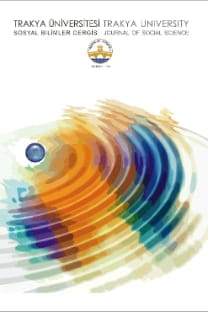MAX ERNST’İN RESİMLERİNDE “ORMAN” İMGESİ
20. yüzyılın önemli bir karşı-hareketi olan Gerçeküstücülük’ün etkin figürlerinden Max Ernst, “orman” teması üzerine çok sayıda eser ortaya koymuştur. Orman imgesi Ernst’ün çocukluk yıllarına dayanmaktadır. Kendi hayat hikâyesinde, amatör bir ressam olan babasıyla çıktığı orman gezintilerine yaptığı vurgu, bu imgenin önemli bir otobiyografik öğe olduğunu düşündürmekte ve Ernst’ün çocukluğunda yaşadığı travmalardan izler taşımaktadır. Öte yandan “orman”, Ernst’ün çok etkilendiği Alman Romantik felsefesi ve edebiyatı içinde zengin metaforlar barındıran bir unsurdur. Caspar David Friedrich’in resimlerinden ve Schelling, Carus, Novalis gibi Alman şair ve düşünürlerinden oldukça etkilenmiş bir sanatçı olan Ernst için doğa ve orman, insanın, onun aracılığıyla, kendisini tanımasına ve çözümlemesine imkân veren metaforlarla yüklü simgesel bir yapıya sahipti. Tüm bunların yanında orman, bir Gerçeküstücü olan Ernst için bir nevi, uygarlıkla hesaplaşmanın metaforu olmuştur. Savaşlar, acılar ve yıkımlar içinde geçmiş 20. yüzyılda, özellikle Gerçeküstücü sanatçılar için, uygarlık çokça sorgulanan bir kavram olmuştur. Ernst bu sorgulamayı, başka bazı imgelerin yanı sıra, Gerçeküstücülüğün karşıtlıkları uzlaştırmaya dayalı anlayışı içinde doğa-kültür ikiliğiyle ilgili bir hesaplaşma alanı olarak gördüğü “orman” imgesi üzerinden yapmıştır. Orman temsillerinde kullandığı frotaj ve grataj teknikleriyle Ernst, Gerçeküstücülüğün temel unsurlarından “nesnel rastlantı”ya açık bırakmıştır resimlerini. Bu yanıyla orman, kontrol edilemez, vahşi ve tehditkârdır. Öte yandan, bilinçdışını harekete geçiren öğelerle kaplı, düşlere açık, gizemli ve büyülü bir alanı temsil etmektedir
THE “FOREST” IMAGE IN MAX ERNST’S PAINTINGS
Max Ernst, one of the prominent figures of Surrealism, an important counter-movement of the 20th century, produced a significant number of works focused on the theme of the “forest”. The influence of the forest image on Ernst dates back to his childhood. The emphasis he makes, in his interviews, on the walking tours in the forest with his father who was an amateur painter, foregrounds this image as an important autobiographical element and a pointer to the traumas of his childhood. Beside its autobiographical significance, this image is a metaphorically rich element in German Romantic philosophy and literature which Ernst was deeply influenced by. For Ernst, whose work bears the influence of Caspar David Friedrich and German poets and thinkers such as Schelling, Carus and Novalis, nature and the forest imply a symbolic structure, laden with metaphors, which, in turn, provides a means for knowing and analyzing oneself. Considering his surrealist stance, we can also note that the image of forest, for Ernst, serves, in a way, a metaphor for coming to terms with civilization. The concept of civilization was brought under scrutiny especially by Surrealist artists in the 20th century which was dominated by wars, tragedies and destruction. Along with some other images, the forest served for him as a field of contest whereby the dichotomy of nature/culture could be questioned in terms of Surrealism’s endeavour to reconcile contradictions. The techniques such as frottage and grattage that he applied in creating his works expose his paintings to “objective chance”, a key element of Surrealist movement. In this sense, the forest is uncontrollable, wild and threatening as well as a mysterious and enchantening space abounding with elements which motivate the unconscious and open to dreams
